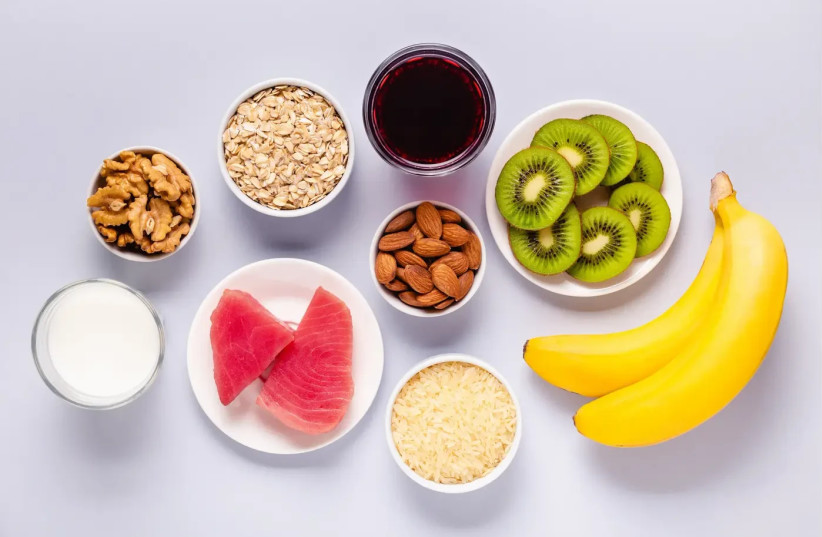Jerusalem Post
ByDR. MAYA ROSMAN
Why is it good to include fish in your diet?
Fish are one of the healthiest sources of high-quality protein – protein that contains all the essential amino acids the body needs. Beyond protein, they contain:
Vitamin B12 – essential for preventing anemia, fatigue, and memory loss
Vitamin D – supports bone health and the immune system
Iodine – necessary for proper thyroid function and metabolism
Omega-3 – essential fatty acids with many health benefits
The healthiest - salmon (credit: SHUTTERSTOCK)
Supports heart health
A broad review published in JAMA found that consuming 2–3 servings of fish per week significantly reduces the risk of heart attacks and strokes, especially when it comes to fatty sea fish like salmon and mackerel.
Slows the onset of Alzheimer's and dementia
A study conducted at Rush University in the USA found that consumption of fish rich in omega-3 is associated with slower development of cognitive decline and better brain function in older adults.
Reduces diabetes and inflammation
A study published in Nutrients found that omega-3 fatty acids reduce markers of inflammation in the body and improve insulin sensitivity – especially in people with prediabetes or obesity.
Vegetarian source of Omega-3 – walnuts (credit: SHUTTERSTOCK)
Fish – yes, but not every fish
Healthiest options:
Deep sea fish – salmon, mackerel, bluefin tuna, and gilt-head bream – rich in omega-3 and high-quality protein.
Sea fish adapted to freshwater – sea bass, white grouper, mullet – contain a good amount of omega-3, usually without the heavy metals found in open sea fish.
Trout – a freshwater fish that lives in cold rivers, rich in omega-3.
Less recommended:
Pond fish like tilapia, carp, Nile perch – contain less omega-3, sometimes have a higher fat percentage, and occasionally lower nutritional value.
The cooking method that harms the nutritional value
One of the most common mistakes is frying the fish – a process that reduces omega-3 concentration, damages heat-sensitive vitamins, and adds trans fats in the case of unstable oils.
A study published in the American Journal of Clinical Nutrition found that consuming fried fish is associated with a 48% increase in the risk of heart disease, compared to baked or steamed fish. The reason is that during frying, the healthy fatty acids in the fish (omega-3) are destroyed, and instead, frying oil is absorbed – often rich in oxidized omega-6. The unbalanced ratio between omega-6 and omega-3 can promote inflammatory processes in the body.
In addition, frying in unstable oil leads to the formation of harmful compounds, such as oxidizing agents and trans fats. That’s why the recommendation is to bake, cook, or steam fish.
What about mercury?
Mercury is a toxic metal that can accumulate in fish over the years. The larger and older the fish – the higher the risk.
Bluefin tuna (used for steaks and sushi) – may contain a relatively high amount of mercury.
Canned tuna – usually comes from a smaller species, so the mercury level is much lower. It can be safely consumed 2–3 times a week.
Pregnant women and young children are advised to limit their intake of mercury-rich fish.
Plant sources of omega-3
What about vegetarians? If you don’t eat fish, you can still get omega-3 from your diet by eating walnuts, ground flaxseeds, chia seeds, and even canola oil.
Note that canola oil contains omega-3, but it is not considered among the recommended oils. In most cases, it is an industrial oil from a genetically modified source, processed at high heat during production. It is one of the cheapest and most common oils, but also among the least nutritious. If you do choose to use it – opt for the cold-pressed version, without additional heating.
A teaspoon of chia or three walnuts a day can provide the required amount of ALA (the plant form of omega-3), although its absorption in the body is less efficient compared to fish.





















